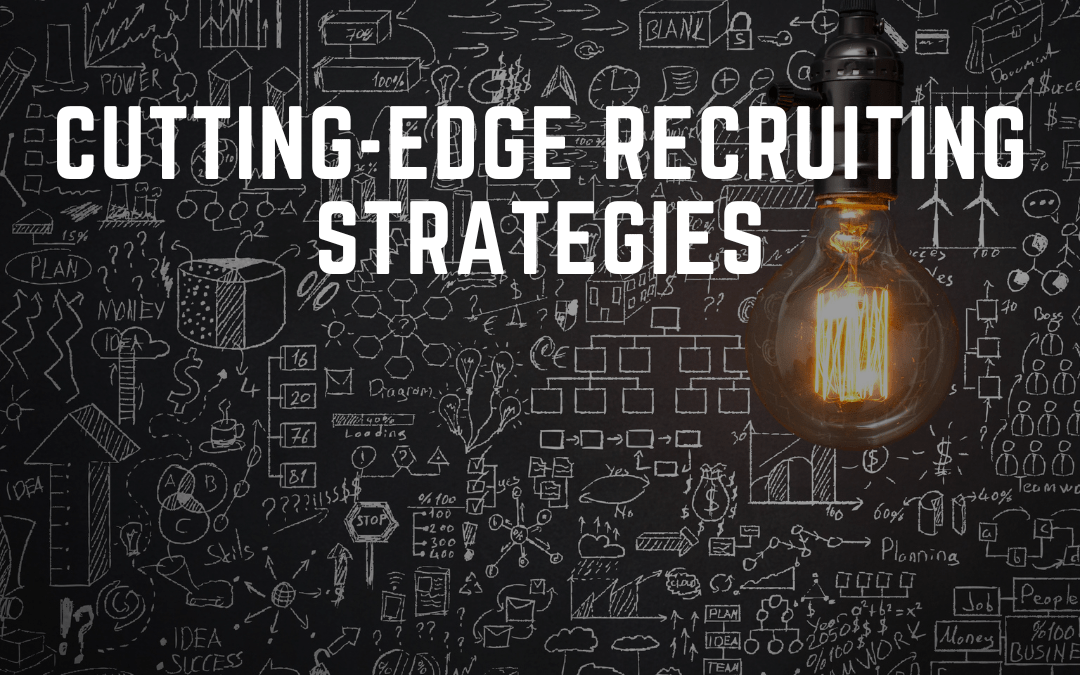In today’s rapidly evolving job market, organizations are constantly on the lookout for innovative and effective recruiting strategies to attract and retain top talent. As technology advances and the expectations of job seekers shift, recruiters need to adapt to new approaches to stay ahead of the curve. In this article, we’ll delve into some of the most exciting recruiting strategies that are reshaping the hiring landscape.
**1. AI-Powered Candidate Screening: Enhancing Efficiency and Objectivity
The days of manually sifting through hundreds of resumes are gradually fading, thanks to the integration of Artificial Intelligence (AI) in recruitment processes. AI-driven tools like HireVue1 employ advanced algorithms to analyze video interviews and assess candidate qualities beyond their resumes, thereby minimizing biases and ensuring a more objective evaluation. With such tools, recruiters can focus their energy on engaging with the most promising candidates while providing a fair chance to everyone.
**2. Gamification: Transforming Assessment into Engaging Challenges
Gamification is gaining traction as a method to engage potential candidates while evaluating their skills. By turning assessments into interactive challenges, employers not only test a candidate’s abilities but also provide a glimpse into the company’s culture and work environment. Pymetrics2 is a platform that employs neuroscience-based games to evaluate cognitive and emotional traits, helping organizations make data-driven hiring decisions that go beyond the surface.
**3. Virtual Reality (VR) Onboarding: Immersive Introduction to Company Culture
The advent of Virtual Reality has opened doors to innovative onboarding experiences. Companies like Walmart3 are leveraging VR to immerse new hires in a virtual representation of their workplace, facilitating a more engaging and memorable introduction to the company culture. This strategy not only accelerates the onboarding process but also reinforces a sense of belonging right from the start.
**4. Inclusive Job Descriptions: Tapping into Diverse Talent Pools
To attract a diverse range of candidates, organizations are reevaluating their job descriptions. Tools like Textio4 analyze language patterns and suggest inclusive alternatives, helping companies avoid inadvertently using language that may deter certain demographics. By crafting more inclusive job listings, businesses can tap into previously untapped talent pools and foster a culture of diversity and belonging.
**5. Micro-Internships: Paving the Way for Skill-Based Recruiting Strategies
Parker Dewey5 has pioneered the concept of micro-internships, providing short-term, project-based opportunities for students and professionals. This approach benefits both parties: candidates gain valuable experience, and employers assess potential hires based on their skills and work quality. This trend is redefining traditional internships, enabling companies to identify candidates who can hit the ground running.
**6. Social Media as a Recruiting Strategies: Showcasing Company Culture
Social media platforms are no longer just for personal use – they’re powerful tools for employer branding and recruitment. Companies are utilizing platforms like LinkedIn6 and Instagram7 to provide insights into their workplace culture, values, and day-to-day operations. This approach humanizes the hiring process and appeals to candidates seeking more than just a job title.
**7. Data-Driven Decision-Making: Enhancing Predictive Analytics
Recruitment is becoming increasingly data-driven, with companies using predictive analytics to make informed hiring decisions. Platforms like Talentsoft8 gather data throughout the employee lifecycle, enabling businesses to identify patterns and make proactive decisions. This strategy enhances retention rates by understanding the factors that contribute to employee success and satisfaction.
**8. Referral Programs with a Twist: Incentivizing Employee Involvement
Employee referrals have long been a reliable source of quality hires, but modern organizations are adding a twist to these programs. Companies like Google9 offer their employees the opportunity to donate their referral bonuses to charitable causes. This approach not only encourages employees to refer candidates but also aligns with the values of candidates who prioritize social responsibility.
**9. Chatbots for Initial Interactions: Streamlining Recruiting Communication
Chatbots are revolutionizing initial interactions with candidates. Mya10 is an AI-powered chatbot that engages with candidates, answers their questions, and guides them through the application process. This instant communication not only provides candidates with a positive experience but also frees up recruiters’ time for more strategic tasks.
**10. Continuous Learning and Upskilling: Investing in Employee Growth: Recruiting Strategies
Recruiting strategies don’t stop after hiring; they extend to employee development. Companies like Amazon11 are investing heavily in upskilling programs to empower their workforce with new skills and growth opportunities. By nurturing employees’ career trajectories, organizations foster loyalty and create a pipeline of internal talent for future roles.
In conclusion, the world of recruitment is undergoing a transformative shift driven by technology and changing candidate expectations. The strategies mentioned above represent just a glimpse into the myriad possibilities available to modern recruiters. As organizations continue to adapt and innovate, the recruitment landscape will remain dynamic and full of exciting opportunities to connect with the best and brightest talents.
To get help with you hiring, book a meeting with a dedicated Hiring Consultant now.
Visit: www.axerecruiting.com

